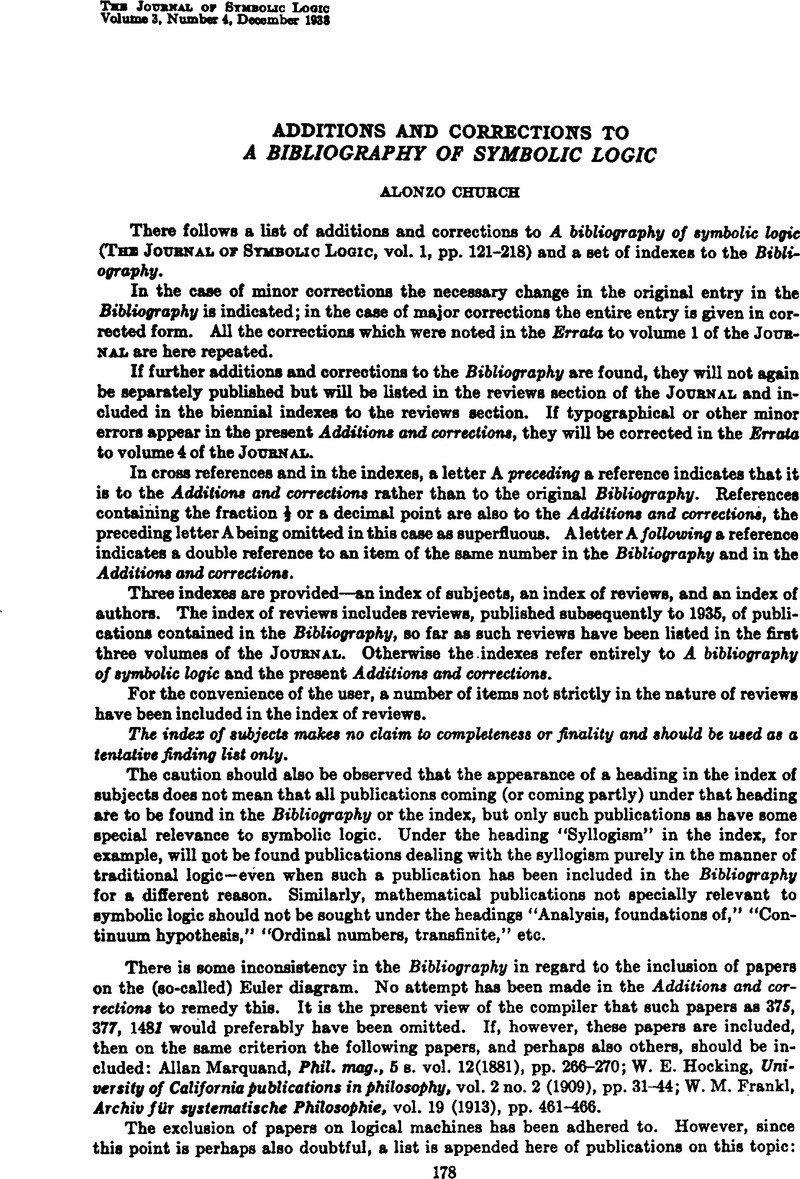Published online by Cambridge University Press: 12 March 2014

1 We adopt the following method of transliterating Russian: A as A, Б as B, B as V, Г as G, Д as D, E as É, Ж as Ž З as Z, И as I, ![]() as J, I as I, K as K, Л as L, M as M, H as N, O as O, Φ as P, P as R, C as S, T as T, Y as U, Ф as F, X as H, Ц as C, Ч as Č, Ш as Š, Щ as ŠČ, Ъ omitted in transliteration, Ы as Y, Ь as ′, B as Ӗ, Э as E, Ю as Ú, Я as Á, ϴ as F.
as J, I as I, K as K, Л as L, M as M, H as N, O as O, Φ as P, P as R, C as S, T as T, Y as U, Ф as F, X as H, Ц as C, Ч as Č, Ш as Š, Щ as ŠČ, Ъ omitted in transliteration, Ы as Y, Ь as ′, B as Ӗ, Э as E, Ю as Ú, Я as Á, ϴ as F.
2 This book, which is not otherwise within the field of the bibliography, is included because of the appearance on pp. 107–113 of the line of thought which afterwards led to the Richard paradox (1351).
3 With the clarification of Zermelo's notion of a definite Eigenschaft and its consequent elimination as a presupposed intuitive idea, the Zermelo set theory may be said first to have attained a degree of exactness comparable to that of the system of Principia mathematica (11116, 1941). A method of doing this is indicated briefly by Fraenkel in 2692, is incorporated in a system of axioms for set theory in 2694, and later applied to the actual development of some topics in set theory in 26911. An alternative method is due to Skolem 2475, 10. And see also J. v. Neumann 2992, 5.